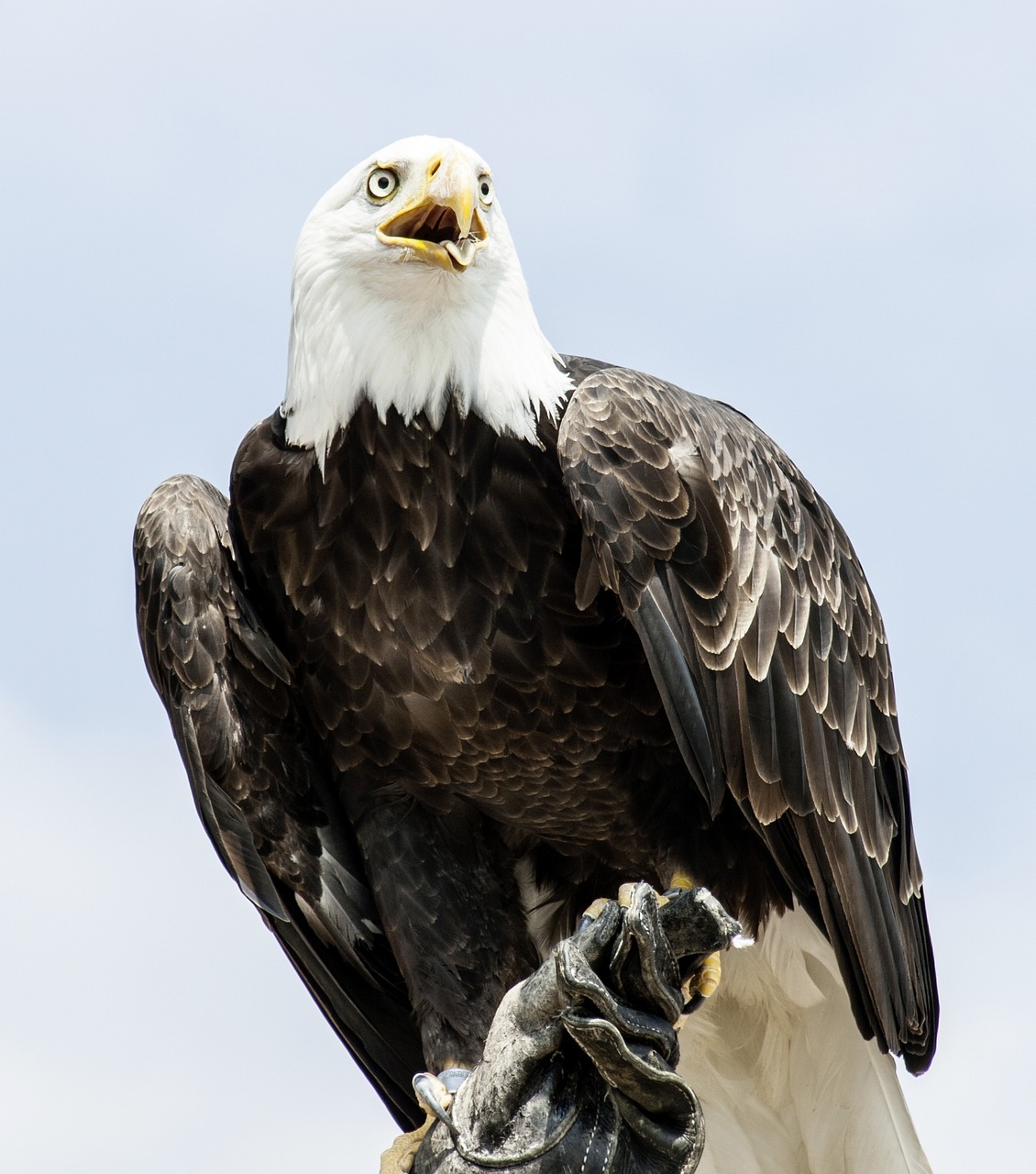Introduction
The Bald Eagle, America’s national bird and symbol of freedom, is one of the most iconic and revered birds in the world. Known for their impressive wingspan, piercing eyes, and majestic demeanor, these raptors are a sight to behold. But there’s more to Bald Eagles than just their striking appearance. This article dives into the life of Bald Eagles, their habitats, and some lesser-known facts that make them even more extraordinary. We’ll also take a closer look at the Bald Eagles found in the Lake Tahoe area, a region where these birds have made a significant impact.
The Bald Eagle: A National Symbol
The Bald Eagle is not just any bird; it is a symbol of American pride and resilience. Adopted as the national emblem in 1782, the Bald Eagle represents freedom, strength, and bravery. Found throughout North America, these birds of prey are easily recognizable by their white heads, brown bodies, and large yellow beaks. With a wingspan that can reach up to 7.5 feet, Bald Eagles are masters of the sky, soaring high above landscapes with grace and power.
Habitat and Range of the Bald Eagle
Bald Eagles are primarily found in North America, with a range that extends from Alaska and Canada down to northern Mexico. They prefer habitats near large bodies of open water, such as lakes, rivers, and coastal regions, where they can hunt for fish, their primary food source. These birds are highly adaptable, often building their nests in tall trees or cliffs where they can have a clear view of the surroundings.
Diet and Hunting Behavior
Bald Eagles are carnivorous, with fish making up the majority of their diet. They are expert hunters, using their sharp talons to snatch fish from the water with incredible precision. While fish are their preferred food, Bald Eagles are opportunistic feeders and will also eat small mammals, birds, and carrion when necessary. Their hunting strategy often involves soaring high in the air to spot prey, then diving down at great speeds to catch their target.
Bald Eagle Lifespan and Reproduction
Bald Eagles are long-lived birds, with a lifespan that can reach up to 30 years in the wild. These birds mate for life and are known for their elaborate courtship displays, which include synchronized flights and aerial acrobatics. Once a pair has bonded, they will build a large nest, known as an eyrie, often using the same nest year after year and adding to it each breeding season. The female typically lays 1-3 eggs, and both parents share the responsibility of incubating the eggs and feeding the chicks.
Bald Eagles in the Lake Tahoe Area
Lake Tahoe, a pristine alpine lake on the border of California and Nevada, is not only a popular destination for outdoor enthusiasts but also a significant habitat for Bald Eagles. The region’s clear waters, abundant fish populations, and towering pines provide an ideal environment for these majestic birds. During the winter months, when many lakes freeze over, Bald Eagles migrate to Lake Tahoe to take advantage of the open water and abundant food supply. Visitors to the area often spot these eagles perched high in the trees or soaring over the lake, especially during the annual eagle migration in January and February.
10 Fun Facts About Bald Eagles
- Not Actually Bald: The term “bald” comes from an old English word meaning “white-headed,” referring to the distinctive white plumage on the eagle’s head.
- Incredible Vision: Bald Eagles have eyesight that is 4-8 times stronger than that of humans, allowing them to spot prey from a mile away.
- Record Wingspan: The wingspan of a Bald Eagle can stretch between 6 to 7.5 feet, making them one of the largest birds in North America.
- Nesting Champions: Bald Eagles build some of the largest nests of any bird species, with some nests weighing over a ton and measuring 10 feet wide.
- Speed Demons: During a hunting dive, Bald Eagles can reach speeds of up to 100 miles per hour.
- Fiercely Territorial: Bald Eagles are highly territorial, especially during the breeding season, and will aggressively defend their nest sites.
- Resilient Population: Bald Eagles were once endangered due to habitat loss and the effects of DDT, but conservation efforts have helped their populations recover.
- Fish Specialists: While they eat a variety of foods, Bald Eagles are particularly skilled at catching fish, which makes up about 70-90% of their diet.
- Powerful Grip: A Bald Eagle’s talons can exert a force of up to 400 pounds per square inch, which is ten times stronger than the grip of an average human hand.
- Longevity: In the wild, Bald Eagles can live up to 30 years, but in captivity, they have been known to live even longer, sometimes exceeding 50 years.

The Role of Bald Eagles in Ecosystems
Bald Eagles play a crucial role in their ecosystems as apex predators and scavengers. By preying on fish and other animals, they help maintain a balance in the populations of these species. Their scavenging habits also contribute to the ecosystem by cleaning up carrion and reducing the spread of disease. Furthermore, the presence of Bald Eagles is often an indicator of a healthy environment, as these birds require clean water and abundant food sources to thrive.
Conservation and Protection Efforts
The Bald Eagle’s journey from the brink of extinction to recovery is one of the greatest success stories in wildlife conservation. In the mid-20th century, the use of the pesticide DDT caused a dramatic decline in eagle populations by thinning their eggshells, leading to reproductive failures. Thanks to the banning of DDT in 1972 and subsequent conservation efforts, Bald Eagle numbers have rebounded. The species was removed from the Endangered Species List in 2007, but they remain protected under the Bald and Golden Eagle Protection Act.
Cultural Significance of the Bald Eagle
Beyond its status as a national symbol, the Bald Eagle holds cultural significance for many Native American tribes. For these communities, the Bald Eagle is a sacred creature, often associated with spiritual guidance and protection. Eagle feathers are highly revered and are used in various ceremonies and rituals. The Bald Eagle’s strength, resilience, and connection to the divine make it a powerful symbol in both Native American and broader American culture.
Observing Bald Eagles in the Wild
For birdwatchers and nature enthusiasts, observing Bald Eagles in the wild is a breathtaking experience. These majestic birds can be found across the United States, particularly near large bodies of water. Some of the best places to see Bald Eagles include the Mississippi River, the Pacific Northwest, Alaska, and, of course, Lake Tahoe. During the winter months, eagle-watching events are popular in many regions, offering guided tours and opportunities to learn more about these incredible birds.
The Future of Bald Eagles
While the recovery of Bald Eagles is a conservation success, ongoing efforts are necessary to ensure their future. Habitat preservation, pollution control, and public education are key components in protecting Bald Eagles and their environments. Climate change poses new challenges, potentially affecting their food sources and nesting sites. By continuing to monitor Bald Eagle populations and addressing environmental threats, we can help ensure that these symbols of freedom remain a thriving part of our natural world.
FAQs
Where do Bald Eagles live?
Bald Eagles are found throughout North America, with a range that extends from Alaska and Canada to northern Mexico. They prefer habitats near large bodies of water.
What do Bald Eagles eat?
Bald Eagles primarily eat fish but are opportunistic feeders that will also eat small mammals, birds, and carrion.
How long do Bald Eagles live?
In the wild, Bald Eagles can live up to 30 years. In captivity, they have been known to live even longer, sometimes exceeding 50 years.
When is the best time to see Bald Eagles in Lake Tahoe?
The best time to see Bald Eagles in Lake Tahoe is during the winter months, particularly in January and February, when they migrate to the area.
Are Bald Eagles still endangered?
No, Bald Eagles were removed from the Endangered Species List in 2007, but they remain protected under the Bald and Golden Eagle Protection Act.
Why is the Bald Eagle a symbol of the United States?
The Bald Eagle was chosen as the national emblem of the United States in 1782 because of its strength, beauty, and association with freedom.
Conclusion
The Bald Eagle is a true symbol of nature’s magnificence, representing both the wild beauty of North America and the spirit of freedom that resonates with people worldwide. Whether soaring above the serene waters of Lake Tahoe or perching high in a tall pine, these majestic birds continue to captivate and inspire us. As we marvel at their strength and grace, it’s essential to remember the importance of preserving their habitats and ensuring that future generations can enjoy the sight of Bald Eagles in the wild.
Your content goes here. Edit or remove this text inline or in the module Content settings. You can also style every aspect of this content in the module Design settings and even apply custom CSS to this text in the module Advanced settings.
